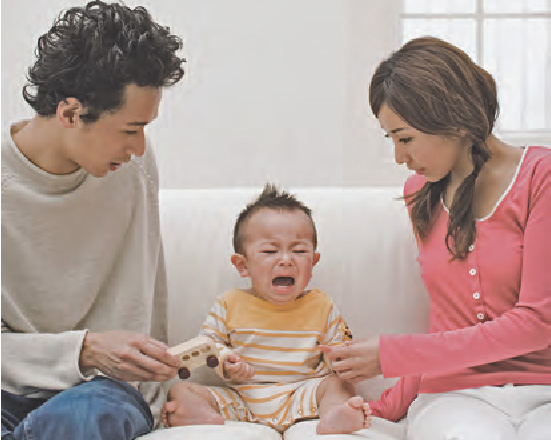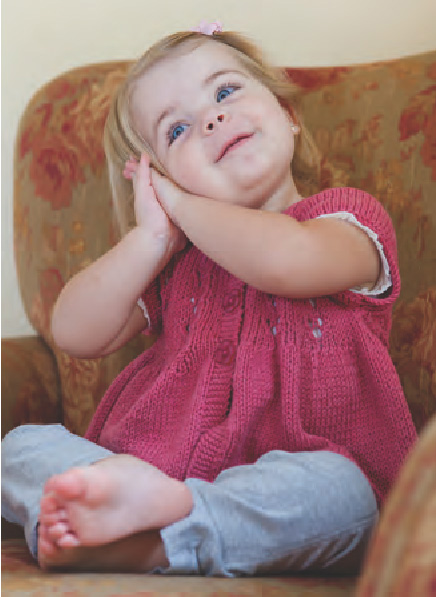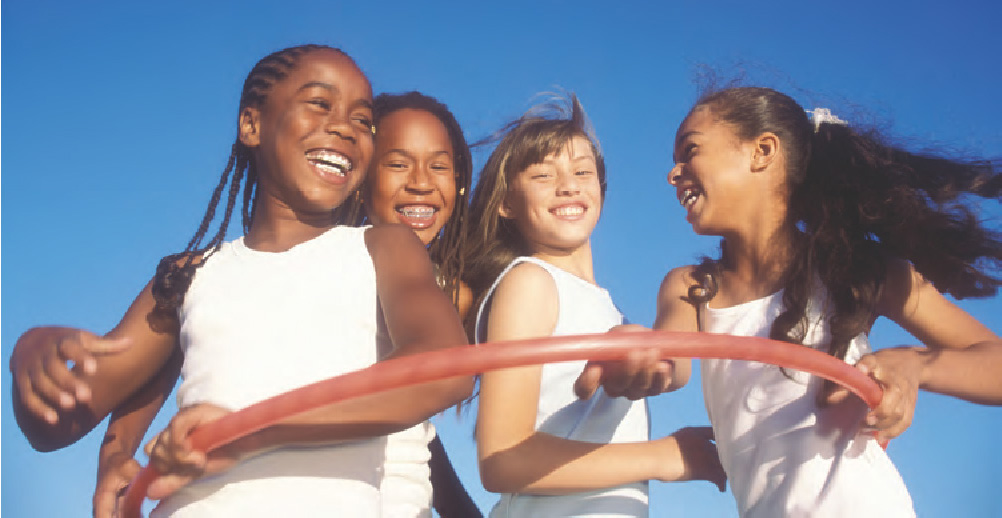Regulation of Emotion
emotional self-regulation  the process of initiating, inhibiting, or modulating internal feeling states and related physiological processes, cognitions, and behaviors
the process of initiating, inhibiting, or modulating internal feeling states and related physiological processes, cognitions, and behaviors
Throughout life, being able to regulate one’s emotions is crucial to achieving one’s goals. Emotional self-regulation is a complex process that involves initiating, inhibiting, or modulating the following aspects of emotional functioning:
- Internal feeling states (the subjective experience of emotion)
- Emotion-related cognitions (e.g., thoughts about one’s desires or goals; one’s interpretation of an evocative situation; self-monitoring of one’s emotional states)
- Emotion-related physiological processes (e.g., heart rate and hormonal or other physiological reactions, including neural activation, that can change as a function of regulating one’s feeling states and thoughts)
- Emotion-related behavior (e.g., actions or facial expressions related to one’s feelings)

To complicate matters, children’s emotionality is difficult to differentiate from their self-regulation (J. J. Gross & Barrett, 2011) and appears to affect the ways in which they regulate both their emotions and behavior (Ekas et al., 2011; Raikes et al., 2007). For example, when children are fearful, they may have more difficulty managing their thoughts, feelings, and behavior than when they are calm. Moreover, emotions often may have a regulatory function in that they affect the nature of children’s thoughts and behaviors in specific situations, for instance, whether children approach or avoid novel objects or people.
The emergence of emotional regulation in childhood is a long, slow process. Obviously, young infants are not very good at controlling their emotional reactions. They are easily overwhelmed by loud noises, abrupt movements, hunger, and pain and must rely on their caregivers to settle them down. Older infants also have difficulty dealing with intense emotions such as fear of strangers or of being left alone, and they often run to parents for comfort. Indeed, it takes years for children to develop the abilities to reliably regulate their emotions and control the behaviors associated with them.
399
The Development of Emotional Regulation
The development of emotional regulation is characterized by three general age-related patterns of change. The first pattern involves the transition from infants’ relying almost totally on other people to help them regulate their emotions to their being increasingly able to self-regulate during early childhood. The second pattern involves the increasing use of cognitive strategies and planful problem solving to control negative emotions. The third pattern involves the increasing selection and use of appropriate, effective regulating strategies (Zimmer-Gembeck & Skinner, 2012).
The Shift from Caregiver Regulation to Self-Regulation
When young infants are distressed, frustrated, or frightened, their parents typically try to help them regulate their emotional arousal by attempting to soothe or distract them (Gianino & Tronick, 1988). For example, mothers tend to use caressing and other affectionate behavior to calm a crying 2-month-old. Over the next few months, they increasingly include vocalizations (e.g., talking, singing, “shushing”) in their calming efforts, as well as in their attempts to divert the infant’s attention. Holding or rocking upset young infants while talking soothingly to them seems to be the most reliable approach, and feeding them if they are not highly upset is also effective (Jahromi, Putnam, & Stifter, 2004).

By 6 months of age, infants show signs of rudimentary emotional self-regulation. In aversively arousing or uncertain situations, they may reduce their distress by unselectively averting their gaze from the source of distress. Occasionally, 6-month-olds can also self-soothe—that is, engage in repetitive rubbing or stroking of their body or clothing. Sometimes they can also distract themselves by looking specifically at neutral or positive persons or objects rather than at what has upset them, a strategy that they increasingly use between ages 1 and 2 (Grolnick, Bridges, & Connell, 1996; Mangelsdorf, Shapiro, & Marzolf, 1995; Parritz, 1996). Such changes in young children’s behavior are probably made possible by their growing ability to control both their own attention and their movements (Ruff & Capozzoli, 2003).

Over the course of the early years, children develop and improve their ability to distract themselves by playing on their own when distressed. They also become less likely to seek comfort from their parents when they are upset (Bridges & Grolnick, 1995). And because of their growing ability to use language, when they are upset by parental demands, they are more likely to discuss and negotiate the situation with the parent than to engage in an emotional outburst (Campos, Frankel, & Camras, 2004; Klimes-Dougan & Kopp, 1999; Kopp, 1992). For example, if a preschooler is unhappy when told by a parent to stop playing and instead clean up his or her room, the child may verbally protest and lobby for extra playtime or work out a timetable for cleaning up rather than throwing a fit.
These changes in children’s self-regulation are at least partly due to the increasing maturation of the neurological systems—including the portion of the frontal lobes that are central to effortfully managing attention and inhibiting thought and behaviors (A. Berger, 2011). They are also partly due to changes in what adults expect of children. As children age, adults increasingly expect them to manage their own emotional arousal and behavior. Once children are capable of crawling, for example, they are viewed as more responsible for their behavior and for complying with parental expectations (J. J. Campos, Kermoian, & Zumbahlen, 1992). At about 9 to 12 months of age, children start to show awareness of adults’ demands and begin to regulate themselves accordingly (Kopp, 1989). Their compliance grows rapidly in the second year of life (Kaler & Kopp, 1990), making them increasingly likely to heed simple instructions, such as to not touch dangerous objects.
400
In the second year of life, children also show increases in the ability to inhibit their motor behavior when asked to do so—such as slowing down their walking or not touching certain attractive objects (N. P. Friedman et al., 2011; Kochanska, Murray, & Harlan, 2000). Although these abilities are quite limited in the toddler years, they improve considerably by age 3 to 5 (Moilanen et al., 2010; Putnam, Gartstein, & Rothbart, 2006) and further improve in the school years and beyond (Bedard et al., 2002; B. C. Murphy et al., 1999; Sinopoli et al., 2011).
Across the early years, children’s ability to regulate their attention improves (Rueda, Posner, & Rothbart, 2011). As a result, children are increasingly able to conform to adults’ expectations, such as not hurting others when angry and staying seated at school when they would much prefer to get up and talk or play with classmates. In adolescence, the neurological changes that occur in the cortex (see page 113) further contribute to self-regulation and other cognitive functioning. They also likely contribute to the decline in risk taking and the improvement in judgment that often occur in the transition from adolescence to young adulthood (Steinberg, 2010).
The Use of Cognitive Strategies to Control Negative Emotion
Whereas younger children regulate their negative emotions primarily by using behavioral strategies (e.g., distracting themselves with play), older children are also able to use cognitive strategies and problem solving to adjust to emotionally difficult situations (Zimmer-Gembeck & Skinner, 2011). Finding themselves caught in unpleasant or threatening circumstances, they may rethink their goals or the meaning of events so that they can adapt gracefully to the situation. This ability helps children avoid acting in ways that might be counterproductive. When older children are teased by peers, for instance, they may be able to defuse the situation by downplaying the importance of the teasing rather than reacting to it in a way that would provoke more teasing.
The Selection of Appropriate Regulatory Strategies
In dealing with emotion, children, over time, improve in their ability to select cognitive or behavioral strategies that are appropriate for the particular situation and stressor (Brenner & Salovey, 1997). One reason is that, with age, children are more aware that the appropriateness of a particular coping behavior depends on their specific needs and goals, as well as on the nature of the problem. For example, children are increasingly likely to realize that it is better to try to find alternative ways to obtain a goal rather than simply give up in frustration when their initial efforts fail (C. A. Berg, 1989). Another reason is that planning and problem-solving skills, which likely contribute to the selection and use of appropriate strategies, improve across childhood and across adolescence (Albert & Steinberg, 2011; Zimmer-Gembeck & Skinner, 2011).
401
Children’s improving ability to use appropriate strategies for dealing with negative situations is also aided by their growing ability to distinguish between stressors that can be controlled (such as homework) and those that cannot be controlled (such as painful but necessary medical procedures). Older children, for example, are more aware than younger children that in situations they cannot control, it is easier to manage their emotion by simply adapting to the situation rather than trying to change it (e.g., Altshuler et al., 1995; Hoffner, 1993; Rudolph, Dennig, & Weisz, 1995). Faced with having to undergo major surgery, for instance, older children may adapt by trying to think about the benefits of having the surgery, such as being in better health afterward, or by distracting themselves with enjoyable activities. Younger children, in contrast, are more likely to insist that they do not need the operation.
The Relation of Emotional Self-Regulation to Social Competence and Adjustment
social competence  the ability to achieve personal goals in social interactions while simultaneously maintaining positive relationships with others
the ability to achieve personal goals in social interactions while simultaneously maintaining positive relationships with others
As we noted earlier, the development of emotional self-regulation has important consequences for children, especially with regard to their social competence. Social competence is a set of skills that helps individuals achieve their personal goals in social interactions while maintaining positive relationships with others (Rubin, Bukowski, & Parker, 1998). A variety of studies indicate that children who have the ability to inhibit inappropriate behaviors, delay gratification, and use cognitive methods of controlling their emotion and behavior tend to be well-adjusted and liked by their peers and by adults (Diener & Kim, 2004; Doan, Fuller-Rowell, & Evans, 2012; Olson et al. 2011; see N. Eisenberg, Spinrad, & Eggum, 2010).

Moreover, children and adolescents who are able to deal constructively with stressful situations—negotiating with others to settle conflicts, planning strategies to resolve upsetting situations, seeking social support, and so on—generally are better adjusted than are children who lack these skills, including those who avoid dealing with stressful situations altogether (K. A. Blair et al., 2004; Compas et al., 2001; Jaser et al., 2007). Well-regulated children also do better in school than their less regulated peers do, likely because they are better able to pay attention, are better behaved and better liked by teachers and peers, and, consequently, like school better (Denham et al., 2012; Duckworth, Quinn, & Sukayama, 2012; Ponitz et al., 2009; Rimm-Kaufman et al., 2009).
402
review:
Children’s efforts to regulate their emotions and emotionally driven behaviors change with age. Whereas young infants must rely on adults to manage their emotions, older infants and young children increasingly regulate their own emotions and behavior through such methods as averting their attention, self-soothing, and distracting themselves with activities. Their ability to inhibit their actions also improves with age. Improvements in children’s regulatory capacities likely are based on increases in brain maturation that allow them to better control their attention and their own bodies, as well as on changes in adults’ expectations of them.
In contrast to young children, who often try to cope with their emotions by taking direct action, older children also are able to use cognitive modes of coping, such as focusing on positive aspects of a negative situation or trying to think about something else altogether. In addition, they are increasingly able to select and use ways of regulating themselves and coping with stress that are appropriate to the requirements of specific situations.
The abilities to regulate one’s emotions and related behavior, and to deal constructively with stressful situations, are associated with high social competence and low levels of problem behavior.